Types of 350cc Scooter Engines
A 350cc scooter engine has a displacement of 350 cubic centimeters, which refers to the total volume of all its cylinders. This engine size delivers a perfect balance of power and efficiency, making it ideal for both urban commuting and highway cruising with excellent acceleration capabilities.
Single-Cylinder Four-Stroke
The most common type found in 350cc scooters, featuring one cylinder that completes four distinct strokes (intake, compression, power, and exhaust) in each cycle.
- Power Output: 25-30 HP
- Advantages: Compact design, lightweight, cost-effective maintenance
- Best For: Daily commuting, urban riding
Parallel Twin-Cylinder Four-Stroke
Features two cylinders positioned side by side, both executing the same four-stroke cycle in parallel operation.
- Power Output: 30-35 HP
- Advantages: Smoother operation, better balance, more power
- Best For: Performance-oriented riding, longer trips
V-Twin Four-Stroke
Features two cylinders arranged in a V configuration, creating a distinctive riding experience with excellent torque characteristics.
- Power Output: 35-40 HP
- Advantages: Superior torque delivery, balanced operation, unique sound
- Best For: Luxury scooters, touring applications
| Engine Type | Power Range | Fuel Efficiency | Maintenance Level | Best Application |
|---|---|---|---|---|
| Single-Cylinder | 25-30 HP | High (70-80 mpg) | Low | Urban commuting |
| Parallel Twin | 30-35 HP | Moderate (60-70 mpg) | Medium | Performance riding |
| V-Twin | 35-40 HP | Lower (50-60 mpg) | High | Touring, luxury models |
Expert Tip: When choosing between engine types, consider your primary riding purpose. Single-cylinder engines offer the best balance of power and economy for most riders, while twin configurations provide smoother operation for longer journeys but require more maintenance.
Specifications of 350cc Scooter Engines
The performance and characteristics of 350cc scooter engines vary by manufacturer and model, but understanding these key specifications will help you make informed decisions about your scooter:
Engine Type
Most 350cc scooters utilize liquid-cooled, 4-stroke, single-cylinder engines. This configuration provides an excellent balance of performance, reliability, and fuel efficiency for everyday riding.
Displacement
The 350cc (21.4 cubic inch) displacement indicates the total volume of air-fuel mixture the engine processes in one complete cycle. This mid-range displacement offers substantial power without excessive weight or fuel consumption.
Power Output
Typically ranging from 25-40 horsepower (18-30 kW) with torque outputs between 30-40 lb-ft (40-54 Nm), delivering excellent acceleration and highway capability.
Fuel System
Modern 350cc scooters feature electronic fuel injection (EFI) systems that optimize fuel delivery across all riding conditions, improving power delivery and reducing emissions.
Ignition System
Electronic ignition systems provide precise spark timing and reliable starting across all weather conditions, enhancing performance and reducing maintenance requirements.
Transmission
Continuously Variable Transmission (CVT) systems are standard on most 350cc scooters, offering automatic, stepless gear changes for smooth acceleration without shifting gears.
Exhaust System
Integrated catalytic converters and mufflers reduce emissions while optimizing back-pressure for better engine performance and meeting environmental regulations.
Cooling System
Liquid cooling with radiator, water pump, and thermostat maintains optimal engine temperature even in extreme conditions, extending engine life and improving reliability.
350cc Engine Performance Comparison
Maintenance of 350cc Scooter Engines
Regular maintenance is crucial for ensuring the longevity, reliability, and performance of your 350cc scooter engine. Following these maintenance guidelines will help you avoid costly repairs and extend your engine's operational lifespan:
| Maintenance Task | Recommended Interval | Importance | DIY Difficulty |
|---|---|---|---|
| Engine Oil & Filter Change | Every 1,500-3,000 miles | Critical | Easy |
| Air Filter Cleaning/Replacement | Every 10,000-15,000 miles | High | Easy |
| Spark Plug Inspection/Replacement | Every 10,000-15,000 miles | High | Medium |
| Valve Clearance Adjustment | Every 15,000-20,000 miles | Medium | Advanced |
| Cooling System Flush | Every 20,000-30,000 miles | Medium | Medium |
| Fuel Injector Cleaning | Every 20,000-30,000 miles | Medium | Advanced |
| Tire Inspection | Monthly | Critical | Easy |
| Brake Inspection | Every 5,000 miles | Critical | Medium |
Essential Maintenance
These regular maintenance tasks are critical for basic engine health:
- Regular oil changes with manufacturer-recommended oil grade
- Air filter cleaning and replacement
- Spark plug inspection and replacement
- Regular coolant level checks
- Tire pressure and tread depth monitoring
Preventative Maintenance
These periodic checks help prevent major issues:
- Valve clearance adjustments
- Cooling system flushing
- Fuel system cleaning
- Belt/chain tension inspection
- Brake fluid replacement
- Suspension component lubrication
Maintenance Pro Tip: Keep a detailed maintenance log with dates, mileage, and work performed. This not only helps you track maintenance schedules but also increases resale value by demonstrating proper care to potential buyers.
How to Choose a 350cc Scooter Engine
Selecting the right 350cc scooter requires careful consideration of several factors to ensure you get a vehicle that meets your specific needs and preferences:
Performance Considerations
- Top Speed Requirements: Consider whether you need highway capability (70+ mph) or primarily urban use
- Acceleration: Twin-cylinder engines offer better acceleration but at higher cost
- Fuel Efficiency: Single-cylinder engines typically provide better economy
- Engine Cooling: Liquid-cooled systems perform better in hot climates and stop-and-go traffic
Practical Considerations
- Maintenance Requirements: Complex engines require more specialized service
- Parts Availability: Popular models have better aftermarket support
- Warranty Coverage: Look for comprehensive warranty terms
- Environmental Compliance: Check emissions standards compatibility for your region
- Comfort Features: Consider seat design, suspension quality, and weather protection
Key Selection Criteria Checklist
| Selection Factor | What to Look For | Why It Matters |
|---|---|---|
| Engine Configuration | Single vs. Twin-Cylinder | Affects power delivery, maintenance complexity, and fuel economy |
| Cooling System | Liquid vs. Air Cooling | Impacts performance in varied conditions and maintenance requirements |
| Transmission Type | CVT vs. Semi-Automatic | Determines riding experience and maintenance needs |
| Fuel System | Advanced EFI with multiple maps | Provides better adaptability to different riding conditions |
| Brand Reputation | Established manufacturers | Indicates reliability and parts availability |
| Service Network | Dealer presence in your area | Ensures access to qualified maintenance |
Important Consideration: Always test ride before purchasing. The engine's character, vibration levels, and power delivery can only be properly assessed through actual riding experience. What looks good on paper may not translate to an enjoyable riding experience.
DIY 350cc Scooter Engine Replacement Guide
Replacing a 350cc scooter engine is an advanced maintenance task that requires mechanical knowledge, proper tools, and careful attention to detail. This step-by-step guide will help you navigate the process safely and effectively:
Step 1: Preparation and Planning
- Obtain the manufacturer's service manual for your specific model
- Verify compatibility between the old and new engines
- Gather all necessary tools: socket set, torque wrench, screwdrivers, pliers, hydraulic jack
- Prepare a clean, well-lit workspace with sufficient room
- Take reference photos of all connections before disassembly
Step 2: Remove Body Panels
- Carefully remove all body panels to access the engine compartment
- Label all fasteners and organize them by location for reassembly
- Store panels safely to prevent damage
Step 3: Drain All Fluids
- Place a drain pan under the engine
- Remove the drain plug and drain all engine oil
- Drain the coolant from the radiator and engine block
- Dispose of all fluids according to local environmental regulations
Step 4: Disconnect Electrical Components
- Disconnect the battery (negative terminal first)
- Label and photograph all electrical connections
- Remove the main wiring harness connectors from the engine
- Detach the starter motor connections
- Disconnect sensors, ignition coils, and fuel injectors
Step 5: Remove Mechanical Connections
- Detach the exhaust system from the engine
- Remove the air intake system
- Disconnect the fuel lines (relieve pressure first!)
- Remove the drive belt or chain
- Disconnect cooling system hoses
Step 6: Remove Engine Mounting Bolts
- Support the engine with a jack or block
- Loosen and remove all engine mounting bolts
- Note the exact position and orientation of all brackets and hardware
Step 7: Install the New Engine
- Carefully position the new engine in the frame
- Install and torque all mounting bolts to manufacturer specifications
- Reconnect all mechanical components in reverse order
- Reattach all electrical connections
Step 8: Refill Fluids and Test
- Fill with manufacturer-recommended engine oil
- Refill the cooling system with appropriate coolant
- Reconnect the battery (positive terminal first)
- Start the engine and check for leaks or unusual noises
- Verify all systems are functioning properly
Step 9: Final Assembly and Testing
- Reinstall all body panels and components
- Perform a comprehensive safety check
- Test ride at low speeds initially
- Monitor engine temperature and performance
- Schedule a professional inspection if you're uncertain about any aspect
Safety Warning: Engine replacement is an advanced maintenance task. If you're not confident in your mechanical abilities, consult a professional technician. Improper installation can lead to engine damage, safety hazards, or personal injury.
Frequently Asked Questions
A well-maintained 350cc scooter can last up to 60,000 miles or more. Longevity depends on several factors including:
- Regular maintenance schedule adherence
- Riding conditions (highway vs. city, terrain, climate)
- Storage practices
- Riding style (aggressive acceleration reduces lifespan)
- Engine type (single-cylinder vs. twin designs)
Following the manufacturer's maintenance schedule and addressing issues promptly can significantly extend engine life beyond typical expectations.
A typical 350cc scooter can reach maximum speeds of 75-85 mph (120-135 kph), depending on:
- Engine configuration (twin-cylinder models generally faster)
- Rider weight and aerodynamics
- Scooter design and weight
- Terrain and wind conditions
- Maintenance condition of the engine
Most 350cc scooters comfortably cruise at highway speeds (65-70 mph) with reserve power for overtaking.
The 350cc scooter offers several advantages compared to other two-wheeled options:
| Comparison | 350cc Scooter | Smaller Scooters (125-150cc) | Larger Scooters (500cc+) | Motorcycles (Similar CC) |
|---|---|---|---|---|
| Top Speed | 75-85 mph | 50-60 mph | 90-110 mph | 85-100 mph |
| Fuel Economy | 60-70 mpg | 80-90 mpg | 45-55 mpg | 50-60 mpg |
| Storage | Good | Limited | Excellent | Poor (without accessories) |
| Ease of Use | Very Easy | Very Easy | Moderate (weight) | More Complex |
| Highway Capability | Good | Limited | Excellent | Excellent |
The 350cc scooter represents an excellent middle ground, offering sufficient power for highway travel while maintaining the convenience, ease of use, and economy that makes scooters attractive for urban transportation.
While individual experiences may vary, these manufacturers consistently receive high reliability ratings for their 350cc engines:
- Honda - Known for exceptional durability and longevity
- Yamaha - Excellent engineering and build quality
- Suzuki - Dependable performance with good parts availability
- Piaggio/Vespa - Modern technology with Italian design heritage
- BMW - Premium engineering with advanced features
- Kymco - Quality Taiwanese manufacturing at competitive prices
Consider factors beyond brand reputation, including local dealer support, parts availability, and service network in your area.
















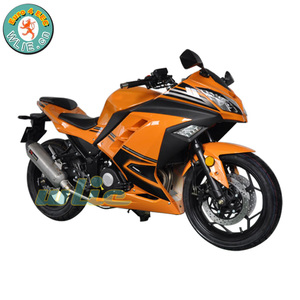
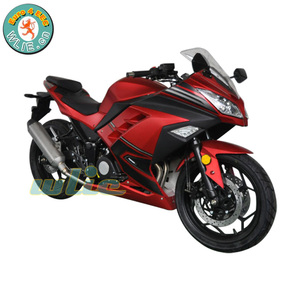











































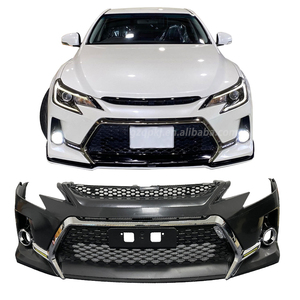









































































































































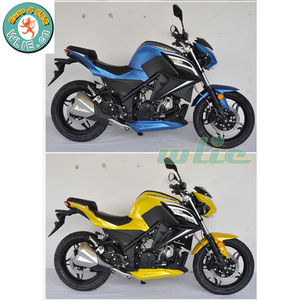

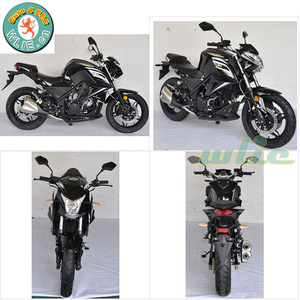



































 浙公网安备 33010002000092号
浙公网安备 33010002000092号 浙B2-20120091-4
浙B2-20120091-4